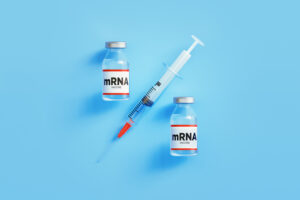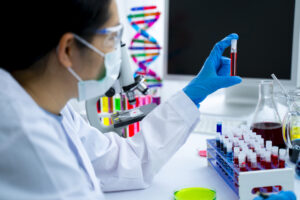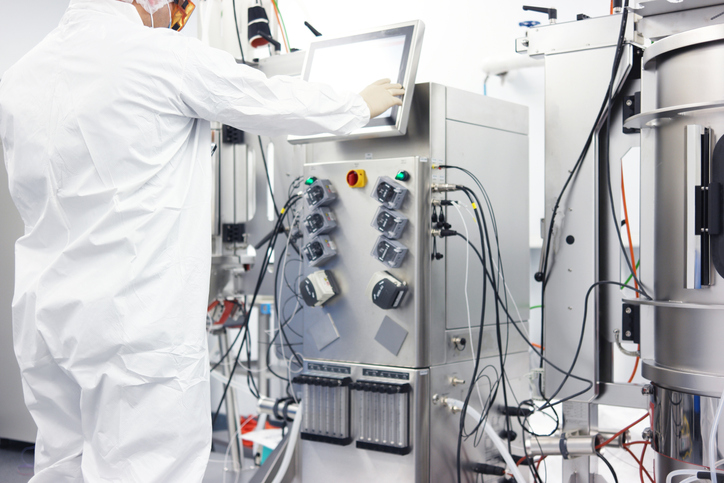Twenty years ago, the U.K. was the place for life science R&D, but it was not backed up by the manufacturing capacity to translate innovation into commercial biotherapies. However, that is changing rapidly according to Brendan Fish, PhD, director of biology of the Center for Process Innovation (CPI) at the recent bioProcessUK conference.
“With the investment in capacity for manufacturing of monoclonals and newer modalities such as viral vectors for gene therapy and mRNA as well as some exciting advances in analytical technologies, we are developing a start-up and scale-up biopharma ecosystem here in the U.K.,” he continued.
Steve Bates OBE, CEO of the BioIndustry Association (BIA), a trade association for life sciences and biotech in the U.K., echoed this sentiment adding: “Year on year, the U.K.’s capacity for manufacturing biomedicines is increasing, and we have the expertise to produce new types of therapies based on mRNA and CRISPR.”
Stephen Ward, PhD, chief manufacturing officer at the Cell & Gene Therapy Catapult added: “As part of our biomanufacturing ecosystem we have a good regulator here in the U.K. with the MHRA (Medicines & Healthcare Products Regulatory Agency). We don’t really give our regulator enough credit, but it has recently authorized the use of the first CRISPR-edited cell therapy. This means the U.K. is the first country in the world to approve gene editing as a potential cure for two inherited blood disorders (sickle cell disease and transfusion-dependent beta thalassemia). The therapy, Casgevy, is also being manufactured in the U.K. by cell and gene therapy CDMO RoslinCT for Vertex Pharmaceuticals.”
Bates noted that the U.K. government has recognized that the country needs investment in manufacturing medicines and in November 2023 the U.K. government announced it would make £520 ($655) million in capital grants available to enable the U.K. to compete to be the home for next-generation therapies, including mRNA and CRISPR. The BIA has also recently published a report highlighting the U.K.’s expertise and capabilities with mRNA.
U.K. manufacturing highlights from 2023
Kit Erlebach, PhD, strategic and transformational venture manager at FUJIFILM Diosynth Biotechnologies reinforced the U.K.’s position in biologics manufacturing with highlights in the U.K.’s biomanufacturing landscape from 2023. Erlebach said that “the major news for the U.K. this year is that mRNA production is being onshored to the U.K. as German biotech BioNTech intends to expand its R&D activities and workforce in the U.K. over the next ten years with a total investment of around £1 ($1.29) billion.”
According to Erlebach, related to this is the news that CDMO Touchlight secured a U.K. government grant to support its £14 ($17.6) million DNA scale-up manufacturing program. As a result of this funding, Touchlight could be the first company globally to reach commercial scale with enzymatic DNA technology (multi-kg of DNA per annum) and could replace plasmid DNA as the primary source of DNA manufacturing for new biologics modalities such as mRNA therapies.

Erlebach also touched on the news that Autolus Therapeutics is building a facility for manufacturing chimeric antigen receptor (CAR) T-cell therapies for cancer treatment.
The manufacture and supply of advanced medicines is rapidly changing, offering many opportunities for the U.K. However, with manufacturing comes the challenge of how to measure the quality of these biological products, an issue that is especially relevant with advanced biotherapeutics.
New methods of assessing product quality
If the U.K. hopes to become a major hub for medicines manufacturing, then accurate analysis and rapid product release are essential pieces to place in the manufacturing puzzle.
There are many challenges for developing analytics for monitoring product quality. For example, scientists want their methods to be at-line or in-line process analytical technology (PAT) tools because this saves time and effort with sampling. However, with the rise of single-use bioprocessing equipment there are sustainability and cost issues to consider when developing analytics. Additionally, the methods must be easy to integrate into existing automation and the data they produce must be easy to process.
Julie Kerby, managing director of technology and process innovation at the Cell and Gene Therapy Catapult commented: “Our role with analytics is to try to understand complex medicines, and we want fast, accurate results. Anything that helps us to improve product quality and get medicines to patients faster is always a good technology.”
Simplifying protein analysis
At the “Dragons Den” style session of the 20th-anniversary bioProcessUK conference, several home-grown analytical technologies, mainly from spinouts from U.K. academic institutes, were pitched and promised to overcome some of these current challenges with analytical methods.
The winner of the event, voted for by delegates, was Abselion, a spinout from the University of Cambridge. Abselion’s CEO, Ruizhi Wang, PhD, introduced Amperia, a benchtop instrument for at-line protein quantification and binding assays.
Wang explained: “Amperia can be used for robust at-line protein quantification or protein binding assays using unpurified supernatant samples. It uses a dip-and-measure approach, where electrical sensors are dipped into wells in a 96-well plate containing the samples. An analyte is bound on the tip of each sensor to detect mAbs, for example, we bind protein A. The detection method is Redox Electrochemical Detection (RED) and when a protein such as a mAb binds to protein A it triggers an electrical signal that is read and analyzed by the Amperia system.”
As an example of the technology’s capabilities, Wang presented a case study conducted with clinical-stage biopharma company Agenus. As part of their cell line development program, Agenus measured and compared human mAb titers from 47 samples of cell culture supernatant using common mAb measurement methods: bio-layer interferometry (BLI), surface plasmon resonance (SPR), and the Amperia system. The results showed that Amperia had a high level of correlation with SPR and BLI and was able to identify the same seven most productive clones as the SPR/BLI analysis.
According to Wang, the Amperia system is small and can easily fit into a biosafety cabinet and be used to quantify adeno-associated virus (AAV) or lentiviral vectors (LVV). Abselion offers the system free of charge for scientists who would like to assess this and other applications in their laboratories.
Wang concluded that “Amperia is compact and can accurately quantify mAbs and AAV in a fraction of the time and cost of current methods. It will save scientists’ time because they won’t have to use expensive central analytical facilities or book a lab slot, yet they can still get the high-quality data they need to make quick decisions on clone selection for example.”
Filling the gap in AAV measurement
Like Abselion, Refeyn, a spinout from the University of Oxford and a previous winner of the bioProcessUK “Dragon’s Den” session, also develops and supplies technology for measuring proteins that it has now adapted for AAV analysis.
“We have developed SamuxMP, which is a fast, accurate benchtop mass photometer system. To use it scientists simply pipette a small volume of liquid (only 10–20 microliters) onto a glass cover slip. The system shines a laser through the sample, it automatically analyses the signal produced to directly measure the mass of the cargo inside each capsid, and then generates easy-to-interpret results within a minute,” stated James Wilkinson, PhD, VP of strategic business development at Refeyn.

Wilkinson also highlighted another case study where the SamuxMP system generated empty and full AAV capsid data that are comparable with gold-standard measurement methods such as analytical ultracentrifugation (AUC) and cryogenic transmission electron microscopy (cryoTEM).
“To extend the application of our SamuxMP mass photometer we have recently introduced the SamuxMP Auto, which offers automated analysis. Both systems can be used in GMP-regulated environments. This means scientists can use the same technology from lab bench through to gene therapy manufacturing to measure the empty/full capsid ratio for AAVs of any serotype and can also detect impurities and aggregation as part of their standard data analysis,” concluded Wilkinson.
The bigger picture for cell and gene therapy
In contrast, Lindsay Fraser, PhD, CSO at Cytomos, discussed the company’s AuraCyt™ system, which utilizes dielectric spectroscopy and silicon chip sensors to measure cells using a wide range of frequencies concurrently to build a picture of the cells in high dimensional space. This allows the technology to sense deep within the cells as well as measure cell surface features, creating unique digital cell fingerprints. These fingerprints can be used to infer information about the cell or the cell population of interest and to predict cell behavior in cell line development programs and biomanufacturing events.
Fraser said that AuraCyt offers a “real-time, label-free, scalable PAT method of monitoring individual cell features to predict when cells are at their peak performance.” She presented case studies to show that AuraCyt reliably identified stable, high mAb-producing CHO clones and could detect when cell populations were beginning to undergo apoptosis.
“Our AuraCyt system is compatible with existing bioprocessing equipment both on its own or alongside flow cytometry technologies and can help save and optimize cell culture batches. This has the benefit of driving down biomanufacturing costs of both biologics and regenerative medicines,” explained Fraser.
Looking to the future, “The U.K. is a good place to develop and now a fantastic place to manufacture biomedicines,” said Cell & Gene Therapy Catapult’s Ward. “We have the Medicines Manufacturing Industry Partnership (MMIP), which was established jointly by the U.K. government and the biopharmaceutical industry almost 10 years ago. The MMIP represents one voice for medicines manufacturers in the U.K., with member companies from SMEs to large multinationals, and is listened to by the U.K. government. This is helping to ensure that the U.K. is recognized globally as an attractive place for manufacturing.”
Sue Pearson, PhD, is a freelance writer based in the U.K.


